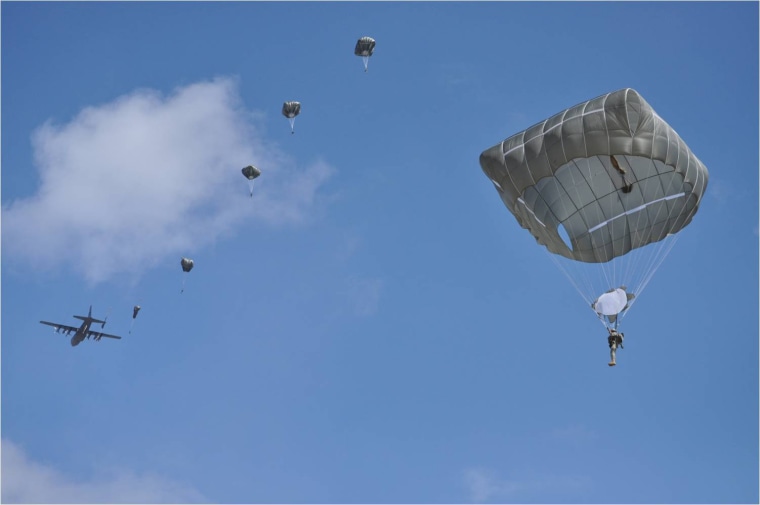The Army has halted the use of its new square parachutes because of problems found after a Fort Bragg soldier died during a training jump.
The Fayetteville Observer reported Wednesday that the T-11 parachutes initially were praised as safer. Tests had shown the new parachutes provide a slower, more stable descent than the traditional mushroom-shaped style.
Now Army investigators say Staff Sgt. Jamal Clay fell to his death last month because his T-11 parachute malfunctioned. Clay died during a training exercise at Fort Bragg in North Carolina. Clay reportedly jumped from a height of 800 feet.
An internal Army memo says investigators found "potential packing, inspection, quality control and functionality problems" with the T-11 parachute system.
According to the Fayetteville Observer, the investigation also revealed "tangled pack assist loops, improper corner arm folds, improperly stowed bridle, twists in the top of the canopy and failed pull tests of the reserve parachutes."
According to the memo, Secretary of the Army John McHugh ordered the suspension of the parachute's use until a safety investigation is completed.
The Fayetteville Observer reported that prior to Clay's death, the Army issued safety restrictions for the T-11 parachute due to lingering questions about wind drift.
The memo warns that jumps of 1,250 feet and higher carry the " realistic chance that several paratroopers will land off the drop zone or be dragged across the ground after landing."
The new parachutes, which are supposed to replace older models in about five years, are designed for the heavier load carried by the modern solider.
Clay is reportedly the service's first fatality with the new parachute.
